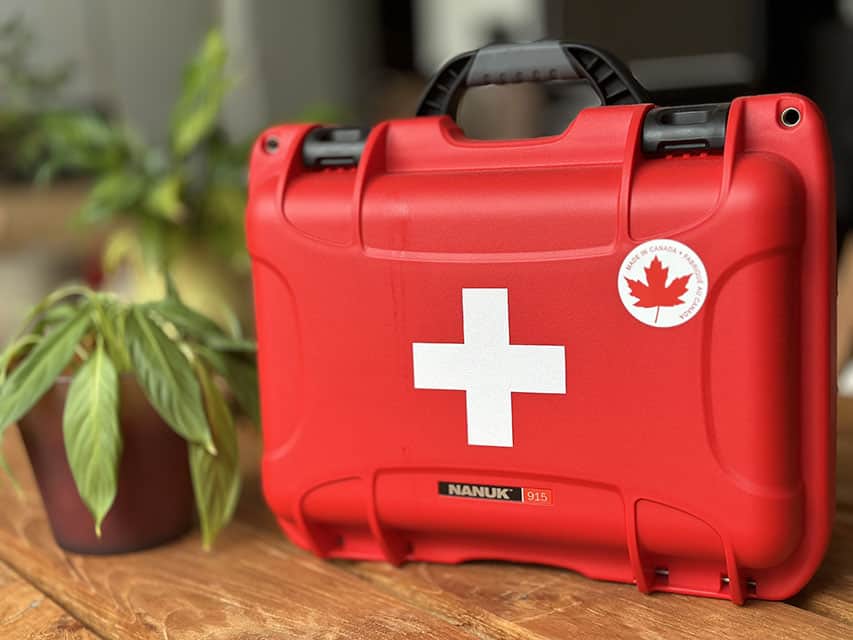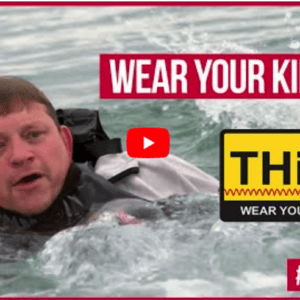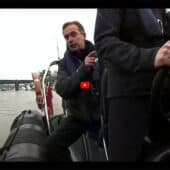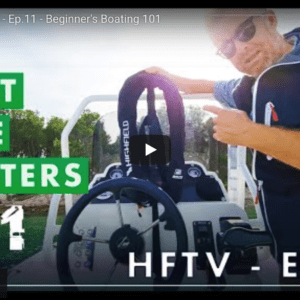
A First Aid Kit is Mandatory On Board
Besides wearing a kill cord and life jackets for everyone on board, a well-equipped first aid kit is also essential for safety on a boat. It should be suitable for the typical number of passengers you have aboard.
A NANUK case is my choice. It is the perfect carrier: strong, robust, safe and waterproof.
It is mandatory to have it on board. However, there is often a lot of confusion regarding the mandatory contents of first aid kits; there are only guidelines on what is recommended to be included.
There are no exact prescribed content; it should simply “cover any injuries”. Keep in mind that this is for first aid. Use also your VHF radio to call for help.
Therefore, I asked my sister, who had been a head nurse for many years, to assist me.
Take the list to the drugstore, and they will provide you with all the needed contents of the case. They might even suggest more or other things.
Here is an overview of what items you should have with you for first aid:
- Bandage materials
- Sterile gauze pads
- Adhesive bandages (various sizes)
- Adhesive tape
- Triangular bandages
- Sterile cotton balls
- Safety pins
- Rubber bandage
- Compression bandages 7 cm x 4 m
- Sparadrap roll
- Mitella (triangular cloth)
- Wound cleaning
- Saline solution (for wound irrigation)
- Antiseptic solution (such as iodine or chlorhexidine)
- Ampoules of physiological serum
- Sterile gauze pads 5 x 5 cm and 10 x 10 cm
- Sterile melamine compresses 5 x 5 cm
- Blood stoppers
- Range of wound plasters
- Elastic cambric bandages width: 5 cm – 7 cm – 10 cm
- Vinyl disposable gloves
- Hydrophilic cotton wool
- Instruments
- Disposable gloves (latex or nitrile)
- Bandage scissors (with blunt tip)
- Tweezers (for removing splinters)
- Fine-point tweezers (with pointed ends)
- Thermometer (non-mercury)
- Medications and other supplies
- Pain relievers (e.g. Paracetamol, Ibuprofen; check the dates)
- Instant cold pack
- Antihistamine (for allergic reactions)
- Anti-nausea medication
- Hand sanitizer (disinfecting alcohol for hands)
- Sunscreen
- Insect repellent
- After bite pen
- Miscellaneous items
- Emergency blanket (to protect against hypothermia, gold/silver coloured)
- First aid instructions or guidebook (including illustrated description CPR)
- Pocket mask or safe kiss breathing cloth (for CPR)
- Mouth masks
Keep that in mind when buying your precious RIB. Also check out the beginner’s guide to buying a RIB.
It’s also important to regularly check your first aid kit like every six months and ensure it is well stocked and up to date.
Additionally, it’s wise to have someone on board, like the skipper, who has knowledge of first aid and CPR techniques.
NANUK

I have been using several NANUK cases for many years now, and I am extremely satisfied.
According to the manufacturer the 915 is allowed as hand luggage on a plane should you need to need to carry one.
If needed, transfer beforehand scissors, knives, fluids over 100 ml etc. to your checked luggage (check your flight operator first for dangerous goods).



